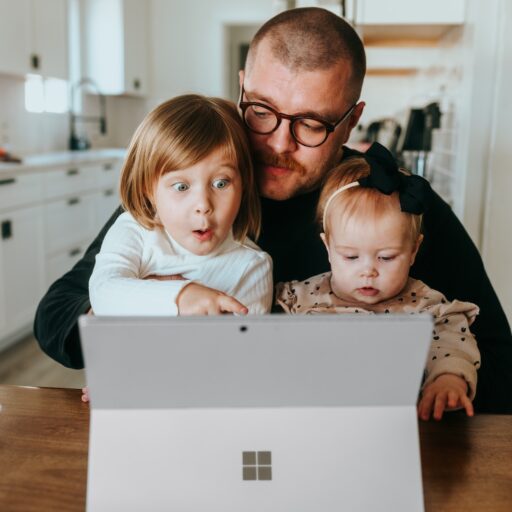Support our educational content for free when you purchase through links on our site. Learn more
Why Was PBS Kids Go Canceled? 7 Surprising Reasons Explained! 🎬
Remember rushing home from school to catch your favorite PBS Kids Go! shows like Arthur or Cyberchase? For many of us, that afternoon block was a golden gateway to fun, learning, and adventure. But then, seemingly out of nowhere, PBS Kids Go! vanished from the lineup, leaving fans puzzled and parents wondering: Why was PBS Kids Go canceled?
In this article, we peel back the curtain on the rise and fall of PBS Kids Go!, uncovering the 7 key reasons behind its cancellation. From shifting viewing habits and financial hurdles to brand confusion and the digital revolution, we explore how this beloved block shaped—and was shaped by—the changing landscape of children’s media. Plus, we’ll share what happened to your favorite shows and how PBS Kids continues to innovate today. Ready to discover the full story and find out what it means for your family’s learning journey? Let’s dive in!
Key Takeaways
- PBS Kids Go! was created to target 6-8-year-olds but faced challenges due to brand overlap and audience confusion.
- The failed attempt at a 24/7 PBS Kids Go! channel highlighted financial and licensing difficulties.
- Changing media consumption habits, especially the rise of streaming and mobile apps, made traditional TV blocks less viable.
- PBS strategically unified its children’s programming under one brand to reduce confusion and embrace digital platforms.
- Many popular PBS Kids Go! shows continue to thrive on the main PBS Kids channel and apps.
- Parents and educators can fill the gap with a wealth of educational games and apps available today.
- PBS Kids’ future is bright, focusing on multi-platform access, diversity, and interactive learning.
👉 Shop Educational Apps and Games:
- PBS Kids Video App: Amazon | PBS Kids Official
- Learning Game™ Educational Games: Explore Here | Educational Apps
Table of Contents
- ⚡️ Quick Tips and Facts About PBS Kids Go Cancellation
- 📺 The Rise and Fall: A History of PBS Kids Go and Its Impact
- 🔍 Why Was PBS Kids Go Canceled? Exploring the Main Reasons
- 📉 Audience Changes and Shifting Viewing Habits That Affected PBS Kids Go
- 💡 How Digital Streaming and New Platforms Changed the Game
- 🎯 Programming Strategy: PBS Kids’ Shift in Focus and Content
- 🧒 What Happened to Popular PBS Kids Go Shows? A Look at Fan Favorites
- 📊 Comparing PBS Kids Go to Other Kids’ Networks and Platforms
- 🛠️ Lessons Learned: What PBS Kids Go’s Cancellation Teaches About Kids’ Media
- 🌟 How Parents and Educators Can Fill the Gap Left by PBS Kids Go
- 🔮 The Future of PBS Kids: Innovations and What’s Next
- ✅ Conclusion: Wrapping Up the PBS Kids Go Story
- 🔗 Recommended Links for PBS Kids and Children’s Educational Media
- ❓ FAQ: Your Burning Questions About PBS Kids Go Answered
- 📚 Reference Links and Sources for PBS Kids Go Cancellation
⚡️ Quick Tips and Facts About PBS Kids Go Cancellation
Before we dive deep, here are some quick nuggets from the Learning Game™ team to get you started on the PBS Kids Go! cancellation story:
- ✅ PBS Kids Go! launched in 2004 to target school-aged kids (6-8 years), filling a gap between preschool and older kids’ content.
- ✅ It aired weekdays, 3-6 pm, with shows like Arthur, Cyberchase, and Maya & Miguel.
- ❌ A planned 24/7 PBS Kids Go! channel was scrapped in 2006 due to high costs and low station affiliation.
- ✅ The brand was officially discontinued in 2013, with shows folded back into the main PBS Kids block.
- ✅ PBS Kids Go! helped PBS successfully age up its audience, but brand confusion and digital shifts made it obsolete.
- 📱 PBS Kids later launched a multi-platform 24/7 channel in 2017, embracing streaming and apps.
Want to know why PBS Kids Go! disappeared and what it means for kids’ educational media? Keep reading — we’ll unpack the full story with insights from educators, parents, and kids alike!
📺 The Rise and Fall: A History of PBS Kids Go and Its Impact

PBS Kids Go! was a bold experiment by PBS to capture the elusive 6-8-year-old audience. Here’s the story behind its launch and eventual sunset.
The Birth of PBS Kids Go!
In the early 2000s, PBS noticed its core audience skewed younger — preschool and kindergarten kids. But what about those slightly older kids craving age-appropriate, educational content? Enter PBS Kids Go!, launched October 11, 2004, with flagship shows like Maya & Miguel and Postcards from Buster. It was a weekday afternoon block designed to bridge the gap between early childhood and upper elementary programming.
Programming Highlights and Expansion
PBS Kids Go! wasn’t just a block; it was a brand. It featured beloved series such as:
- Arthur
- Cyberchase
- Fetch! with Ruff Ruffman
- WordGirl
- Wild Kratts
PBS also launched a dedicated PBS Kids Go! website with games and videos, engaging kids beyond the TV screen. The block expanded with new shows and web exclusives, reflecting PBS’s commitment to educational entertainment.
The Failed 24/7 Channel Dream
In 2006, PBS planned a 24-hour PBS Kids Go! channel, including a Spanish-language block called PBS Kids Vayan! However, only about one-third of PBS stations signed on, citing high licensing fees and budget constraints. The channel was canceled before launch, a major blow to the brand’s growth.
The Sunset of PBS Kids Go!
By 2013, PBS announced the discontinuation of PBS Kids Go! The reasoning? The brand had done its job — PBS successfully attracted older kids to its programming, making the separate block redundant. Shows were merged back into the main PBS Kids lineup, and the brand faded away with the launch of Peg + Cat and a redesigned PBS Kids platform.
🔍 Why Was PBS Kids Go Canceled? Exploring the Main Reasons
So, why exactly did PBS Kids Go! get the axe? Let’s break down the key factors that led to its cancellation.
1. Brand Confusion and Overlap
PBS Kids Go! was meant to be distinct, but many viewers and even parents found it hard to differentiate from the main PBS Kids brand. Shows like Arthur and Wild Kratts appealed to a broad age range, blurring the lines between “Go!” and regular PBS Kids content.
2. Financial and Licensing Challenges
The failed 24/7 channel attempt revealed the financial hurdles PBS faced. Licensing fees for exclusive content were steep, and many local PBS stations couldn’t justify the cost. This limited the brand’s expansion and reach.
3. Changing Media Consumption Habits
By the early 2010s, kids were increasingly turning to digital platforms and streaming for content. The traditional TV block model was losing ground to on-demand apps and websites, which PBS later embraced with its PBS Kids Video app.
4. Successful Audience Aging
PBS’s goal was to attract older kids to its educational programming. According to PBS, this was achieved, making a separate “Go!” brand unnecessary. The main PBS Kids block began incorporating shows that appealed to a wider age range.
5. Strategic Shift to Unified Branding
PBS aimed for a streamlined, unified brand to reduce confusion and focus marketing efforts. The discontinuation of PBS Kids Go! coincided with a major redesign of the PBS Kids website and the launch of new shows like Peg + Cat.
📉 Audience Changes and Shifting Viewing Habits That Affected PBS Kids Go
Kids’ viewing habits in the 2000s and early 2010s were evolving fast — and PBS Kids Go! had to keep up or get left behind.
The Rise of On-Demand and Streaming
Kids were no longer tied to the TV schedule. Platforms like Netflix, YouTube, and later Disney+ offered on-demand access to shows, making fixed blocks less appealing. PBS Kids responded by developing apps and online video players, but the Go! block remained a traditional TV segment.
Mobile Devices and Interactive Content
Children’s screen time shifted toward tablets and smartphones, where interactive games and apps became king. PBS Kids Go! had a website with games, but it couldn’t compete with the immersive experiences offered by dedicated apps like PBS Kids Video and third-party educational apps.
Parental Preferences and Educational Goals
Parents increasingly sought flexible, educational content that fit their family’s schedule. The fixed afternoon block of PBS Kids Go! was less convenient compared to streaming options. Plus, parents valued content with clear educational outcomes, which PBS continued offering through its broader Kids brand.
💡 How Digital Streaming and New Platforms Changed the Game
PBS Kids Go! was a product of its time — but the digital revolution changed everything.
PBS Kids Video App and Website Evolution
PBS Kids Go! pioneered online video content for school-age kids, launching a video player in 2008. This evolved into the PBS Kids Video app, which now offers thousands of videos on demand, accessible anytime.
The 2017 PBS Kids 24/7 Channel Relaunch
After the Go! channel cancellation in 2006, PBS finally launched a multi-platform 24/7 PBS Kids channel in 2017, available on streaming devices, cable, and online. This channel integrates content for all ages under one umbrella, reflecting lessons learned from the Go! experience.
Competition from Commercial Platforms
PBS Kids Go! faced stiff competition from commercial kids’ networks like Nickelodeon, Cartoon Network, and Disney Channel — all of which rapidly expanded digital offerings. Streaming giants like Netflix also invested heavily in kids’ content, raising the bar for accessibility and interactivity.
🎯 Programming Strategy: PBS Kids’ Shift in Focus and Content
PBS Kids Go! was part of a larger strategy to age up PBS’s audience, but programming priorities evolved over time.
Broadening the Age Range
Initially targeting 6-8-year-olds, PBS Kids Go! included shows with educational themes in science, literacy, and social skills. Over time, PBS realized many shows appealed to a wider age range, making a separate block unnecessary.
Focus on STEM and Social-Emotional Learning
PBS Kids shifted toward shows emphasizing STEM (Science, Technology, Engineering, Math) and social-emotional learning, such as Peg + Cat and Daniel Tiger’s Neighborhood. These programs fit better in a unified PBS Kids brand than in a separate Go! block.
Incorporating Digital and Interactive Elements
PBS integrated games, apps, and web content with its programming, creating a multi-platform learning ecosystem. This approach better suits today’s tech-savvy kids and their families.
🧒 What Happened to Popular PBS Kids Go Shows? A Look at Fan Favorites
Many of PBS Kids Go!’s beloved shows didn’t disappear — they just found new homes.
| Show | Original PBS Kids Go! Run | Post-Cancellation Status |
|---|---|---|
| Arthur | 2004 – 2013 | Continued on PBS Kids main block until 2022 |
| Cyberchase | 2004 – 2013 | Still airing on PBS Kids and streaming platforms |
| WordGirl | 2007 – 2013 | Ended in 2015; remains popular in reruns |
| Wild Kratts | 2011 – 2013 | Ongoing; active on PBS Kids and apps |
| Fetch! with Ruff Ruffman | 2006 – 2010 | Ended; fondly remembered by fans |
| Maya & Miguel | 2004 – 2013 | Ended; available on streaming platforms |
Fan Perspectives
Parents and kids at Learning Game™ remember Fetch! as a fun, engaging science show, while Wild Kratts continues to inspire curiosity about animals. The seamless transition of these shows to the main PBS Kids block helped maintain continuity for families.
📊 Comparing PBS Kids Go to Other Kids’ Networks and Platforms
How did PBS Kids Go! stack up against competitors? Let’s compare key aspects.
| Aspect | PBS Kids Go! | Nickelodeon / Disney Channel | Netflix Kids |
|---|---|---|---|
| Target Age Group | 6-8 years | 2-12 years (varied by show) | All ages |
| Educational Focus | Strong (literacy, STEM, social) | Mixed (entertainment + some education) | Mixed, with growing educational content |
| Availability | Weekday afternoons on PBS | Cable TV and streaming | Streaming on demand |
| Digital Integration | Early web games and video player | Apps and websites | Extensive apps and interactive content |
| Cost to Viewers | Free over-the-air and online | Cable subscription required | Subscription required |
PBS Kids Go! excelled in educational quality and accessibility but struggled with limited airtime and digital reach compared to commercial giants and streaming platforms.
🛠️ Lessons Learned: What PBS Kids Go’s Cancellation Teaches About Kids’ Media
PBS Kids Go! offers valuable insights for anyone interested in children’s educational media.
1. Brand Clarity is Crucial
Confusing or overlapping brands can dilute impact. PBS’s move to unify its kids’ content under one brand simplified messaging and helped build stronger recognition.
2. Adapt to Changing Technology
Kids’ media consumption is rapidly evolving. Successful brands embrace multi-platform strategies, including apps, streaming, and interactive content.
3. Financial Sustainability Matters
High licensing fees and station buy-in are critical for network success. PBS Kids Go! struggled here, showing the importance of balancing quality with affordability.
4. Audience Understanding is Key
PBS’s initial goal to age up its audience succeeded, but the approach needed flexibility as kids’ interests and habits changed.
🌟 How Parents and Educators Can Fill the Gap Left by PBS Kids Go
Even though PBS Kids Go! is gone, parents and educators can still access rich educational content for school-age kids.
Recommended Resources
- PBS Kids Main Channel and Website: Offers a wide range of shows and games for all ages.
- Educational Apps: Try apps like PBS Kids Video, DragonBox (math), and Endless Alphabet for literacy.
- Learning Game™ Educational Games: Explore our curated Educational Games and Educational Apps for fun, interactive learning.
- Local Library and Community Programs: Many libraries offer free access to PBS Kids DVDs and digital content.
Tips for Parents and Teachers
- Mix screen time with hands-on activities related to show themes (science experiments, storytelling).
- Use PBS Kids games and videos as supplements, not replacements, for active learning.
- Encourage kids to explore content that matches their interests and developmental level.
🔮 The Future of PBS Kids: Innovations and What’s Next
PBS Kids continues to evolve, learning from the PBS Kids Go! chapter.
Multi-Platform Expansion
The 24/7 PBS Kids channel launched in 2017 is available on streaming devices like Roku, Amazon Fire TV, and Apple TV, plus online and mobile apps. This ensures kids can watch anytime, anywhere.
Focus on Diversity and Inclusion
PBS Kids is committed to diverse characters and stories, reflecting real-world experiences and promoting empathy.
Interactive and Gamified Learning
PBS Kids integrates gamification techniques to boost engagement and learning outcomes, as detailed in our Gamification Techniques section.
Research-Backed Content
PBS Kids partners with educational researchers to ensure programming supports cognitive and social development, a topic we explore in Game-based Learning Research.
We hope this deep dive into PBS Kids Go! has answered your questions and sparked your curiosity about children’s educational media! Ready to explore more? Check out our recommended links next.
✅ Conclusion: Wrapping Up the PBS Kids Go Story

PBS Kids Go! was a trailblazer in educational programming for school-age children, filling a crucial gap between preschool content and older kids’ shows. It brought beloved series like Arthur, WordGirl, and Wild Kratts to the forefront, combining fun storytelling with meaningful learning. However, financial challenges, brand confusion, and the rise of digital streaming ultimately led to its cancellation in 2013.
From our Learning Game™ perspective, PBS Kids Go! was a valuable stepping stone that helped PBS evolve its approach to educational media. The brand’s discontinuation wasn’t a failure but a strategic pivot toward a unified, multi-platform PBS Kids experience that better suits today’s tech-savvy families.
If you’re wondering whether PBS Kids Go! content is still relevant — absolutely! Many of its shows live on within the main PBS Kids block and digital apps, continuing to educate and entertain new generations. Plus, the lessons learned from PBS Kids Go! have shaped the future of children’s educational media, emphasizing accessibility, interactivity, and inclusivity.
So, while PBS Kids Go! may be a fond memory, its legacy is very much alive — and the future of PBS Kids looks brighter than ever. Ready to explore the best educational games and shows for your child? Let’s dive into some top recommendations next!
🔗 Recommended Links for PBS Kids and Children’s Educational Media
Looking for quality educational content and games inspired by PBS Kids Go!? Check out these trusted resources and products:
- PBS Kids Video App: Amazon | PBS Kids Official Website
- Wild Kratts Educational Games: Amazon | PBS Kids Official
- Educational Apps for Kids: Amazon | Learning Game™ Educational Apps
- Books Inspired by PBS Kids Shows:
👉 CHECK PRICE on:
- PBS Kids Video App: Amazon | PBS Kids Official
- Educational Apps Collection: Amazon | Learning Game™ Apps
❓ FAQ: Your Burning Questions About PBS Kids Go Answered

What happened to PBS Kids Go after it was canceled?
PBS Kids Go! was officially discontinued in 2013 as PBS unified its children’s programming under the main PBS Kids brand. The shows that aired on PBS Kids Go! — such as Arthur, Cyberchase, and Wild Kratts — were folded back into the main PBS Kids lineup. This move was part of a strategic shift to reduce brand confusion and adapt to changing viewing habits, especially the rise of digital and streaming platforms. PBS Kids Go! content lives on through the PBS Kids 24/7 channel, apps, and website, ensuring continued access for families.
Are there any alternative learning games and shows that replaced PBS Kids Go?
Yes! While PBS Kids Go! as a brand disappeared, many of its educational values and shows were absorbed into the broader PBS Kids ecosystem. New shows like Peg + Cat and Dinosaur Train continue to offer engaging STEM and literacy content. Additionally, PBS Kids expanded its digital presence with apps like the PBS Kids Video app and interactive games that complement TV programming. For parents seeking alternatives, platforms like Learning Game™’s Educational Games and apps such as DragonBox and Endless Alphabet provide rich, interactive learning experiences.
How can I still access educational content from PBS Kids Go for my child?
You can access PBS Kids Go! content primarily through the PBS Kids website, the PBS Kids Video app, and the PBS Kids 24/7 channel available on streaming devices and cable. Many classic shows from the Go! era are available on-demand on platforms like Amazon Prime Video and PBS’s official site. Additionally, PBS Kids offers games and activities related to these shows online, making it easy to supplement screen time with interactive learning.
What other fun learning games and online resources are available for kids who enjoyed PBS Kids Go?
Kids who loved PBS Kids Go! will enjoy a variety of educational games and resources, including:
- PBS Kids Games: Interactive games tied to popular shows, available on PBS Kids Games.
- Learning Game™ Educational Games: Curated games focusing on math, literacy, and science, accessible at Educational Games.
- Educational Apps: Apps like Khan Academy Kids, ABCmouse, and Endless Reader provide engaging learning on mobile devices.
- YouTube Channels: Channels like SciShow Kids and CrashCourse Kids offer fun science videos.
Parents and educators can combine these resources with hands-on activities to create a rich, balanced learning environment.
📚 Reference Links and Sources for PBS Kids Go Cancellation
For further reading and verification, here are reputable sources we referenced:
- PBS Kids Go! History on PBS Kids Fandom
- PBS Kids Go! Wikipedia Article
- PBS Kids Official FAQ
- PBS Kids Official Website
- PBS Kids Video App
- Learning Game™ Educational Games Category
- Learning Game™ Educational Apps Category
These sources provide comprehensive insights into the history, programming, and evolution of PBS Kids Go! and its legacy in children’s educational media.




